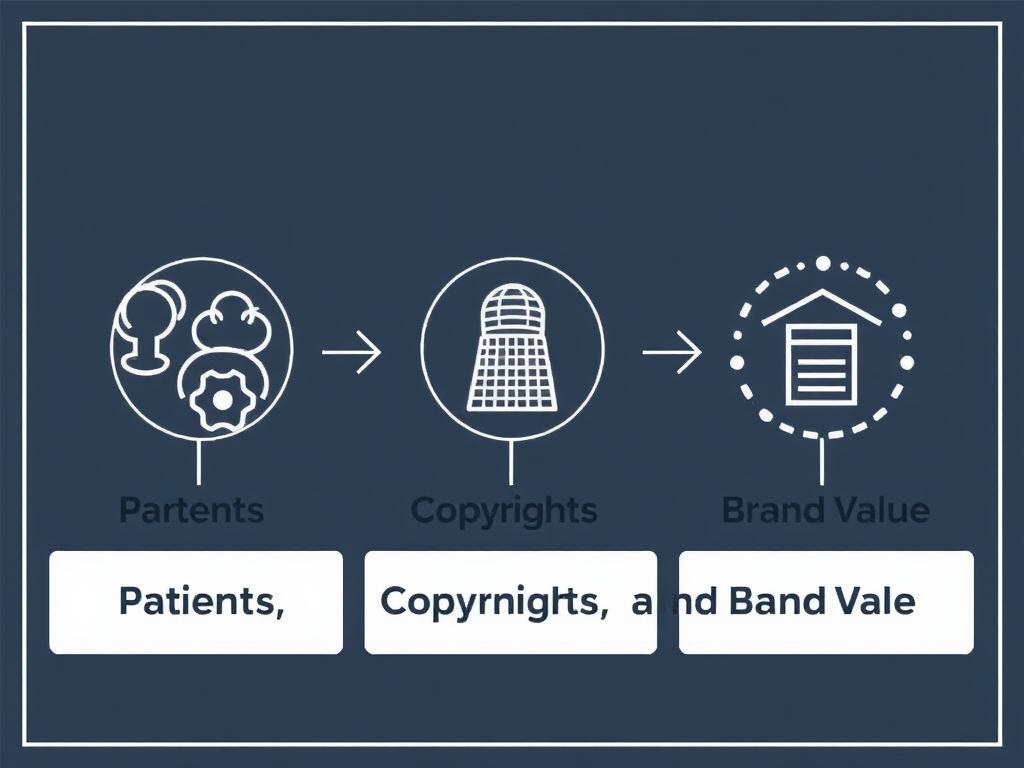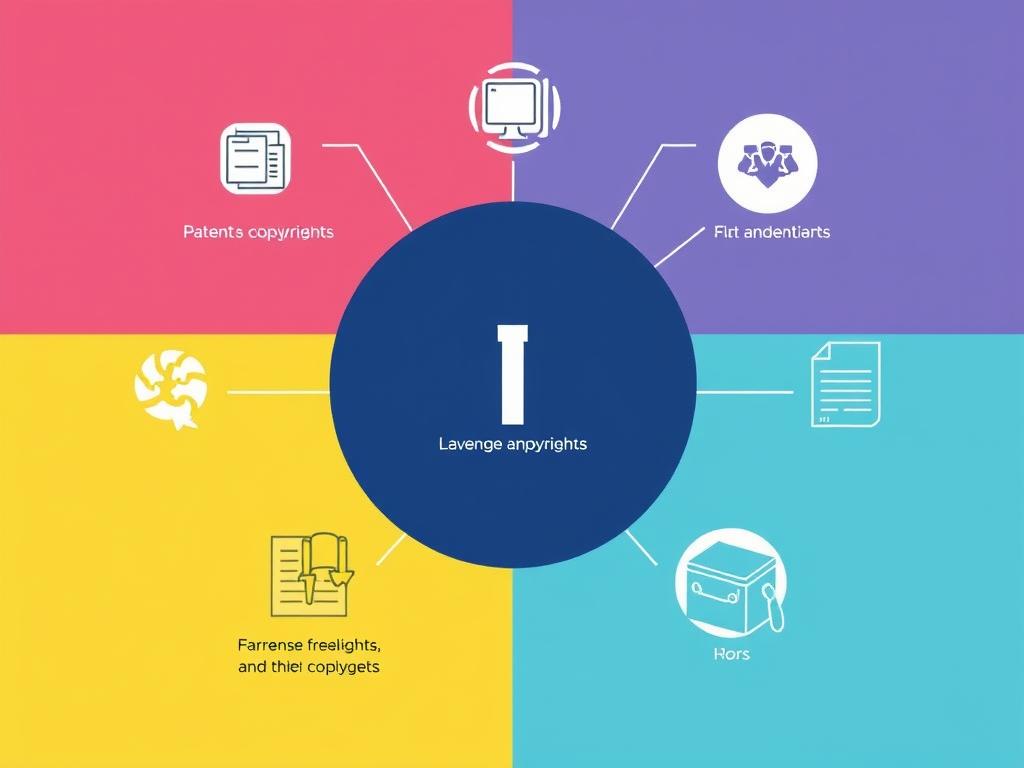Intellectual Capital: Patents, Copyrights, and Brand Value Explained
In today’s highly competitive business landscape, intellectual capital has become one of the most valuable assets a company can own. But what exactly is intellectual capital, and why do patents, copyrights, and brand value play such critical roles within it? Simply put, intellectual capital refers to the intangible value held in a company’s knowledge, innovations, creative works, and reputations. While physical assets and financial resources are important, the ideas and identities behind a business often drive long-term success and market differentiation. Understanding the components of intellectual capital can help businesses protect their innovations, leverage creative outputs, and build lasting brand recognition.
Let’s start with patents, which are a cornerstone of intellectual property protection. A patent legally grants an inventor exclusive rights to their invention for a set period, typically 20 years. This means that no one else can produce, use, or sell the patented invention without permission. Patents encourage innovation by providing inventors a temporary monopoly, allowing them to recoup research and development investments. Beyond protecting new products or processes, patents can create revenue streams through licensing deals or partnerships. For startups and established companies alike, having a robust patent portfolio can significantly increase a firm’s valuation and market position.
Copyrights, while different from patents, are equally crucial in safeguarding creative output. Copyright protection applies to original works such as literature, music, software code, films, art, and more. With a copyright, creators hold exclusive rights to reproduce, distribute, and publicly display their works. Unlike patents, copyrights usually last much longer—often the life of the author plus 70 years—helping to preserve cultural and intellectual heritage. For businesses, copyrights can secure the ownership of marketing materials, training manuals, software applications, and multimedia content. This legal shield prevents unauthorized use and promotes the creation of new artistic and literary works.
Another significant yet sometimes overlooked element of intellectual capital is brand value. Your brand is more than just a logo or slogan—it represents the promise, reputation, and emotional connection your company has with its customers. A strong brand can command premium pricing, foster customer loyalty, and act as a powerful marketing tool. Brand value often reflects years of consistent quality, trustworthiness, and customer experience. Companies invest heavily in brand management to enhance this intangible asset and differentiate themselves in cluttered markets. From trademark protections to strategic advertising, nurturing brand equity is vital for sustaining long-term profitability.
Breaking Down Intellectual Capital Components

Intellectual capital can be broadly divided into three main components: human capital, structural capital, and relational capital. While patents, copyrights, and brand value often fall within structural and relational capital, understanding this broader framework helps appreciate how intangible assets function together.
- Human Capital – The collective knowledge, skills, and expertise of employees. This includes innovation capabilities and problem-solving skills that drive new products and services.
- Structural Capital – The institutionalized knowledge and processes within a company. This includes patents, copyrights, databases, software, organizational routines, and corporate culture.
- Relational Capital – The value derived from relationships with customers, suppliers, partners, and stakeholders. Brand reputation and customer loyalty are key parts of relational capital.
Patents and copyrights primarily contribute to structural capital by embedding legal ownership of intellectual property within corporate assets. Brand value, meanwhile, reflects relational capital by influencing customer perceptions and market positioning.
How Patents Protect Innovation
The patent process begins with filing an application that describes the invention in detail. Once granted, a patent holder gains exclusive commercial rights and can take legal action against infringement. Patents encourage not only the creation of novel inventions but also the disclosure of advancement to the public, fostering an environment where knowledge can build upon itself.
Here’s a simplified table to highlight the benefits of patents in protecting intellectual capital:
| Benefit | Description |
|---|---|
| Legal Protection | Exclusive rights to prevent unauthorized use of the invention. |
| Competitive Advantage | Allows companies to differentiate products and services. |
| Monetization Opportunities | Licensing and selling patents generate revenue. |
| Market Valuation | Intangible assets that increase company worth. |
Understanding Copyrights and Their Importance

Unlike patents, copyrights do not require registration, though registering can offer additional legal benefits. Copyrights automatically protect original expressions as soon as they are fixed in a tangible form. This allows creators to control how their works are used and helps combat piracy and plagiarism.
Some examples of what Copyrights cover:
- Books, articles, and blogs
- Music compositions and sound recordings
- Computer software and apps
- Photos, paintings, and graphic designs
- Films and videos
By safeguarding these creative materials, companies maintain control over their marketing content, instructional materials, and entertainment products—essential parts of their intellectual capital portfolio.
The Role of Brand Value in Intellectual Capital
Brand value measures the strength of a company’s brand in the marketplace. This value stems from consumer perceptions, advertising effectiveness, customer experiences, and product quality. When done right, strong branding can translate to customer loyalty and repeat business—even in heavily commoditized industries.
There are several ways companies build and protect brand value:
- Trademark registration to legally safeguard logos, names, and slogans.
- Consistent brand messaging and experience across all customer touch points.
- Active engagement and relationship building with customers and communities.
- Investing in quality products and services that uphold the brand promise.
Integrating Patents, Copyrights, and Brand Value in Business Strategy
To harness the full power of intellectual capital, companies need to integrate their management of patents, copyrights, and brand value into a cohesive strategy. This involves cross-functional coordination between legal teams, marketing departments, R&D, and leadership.
Key strategic actions include:
- Identifying and cataloging intellectual property assets regularly.
- Investing in IP education to ensure employees understand its importance.
- Creating policies for IP protection, use, and enforcement.
- Leverage patent and copyright portfolios as bargaining chips in partnerships and negotiations.
- Continuously monitoring and enhancing brand reputation through market research and consumer feedback.
By embedding these practices into the company DNA, businesses transform intangible assets into sustainable competitive advantages that drive growth.
Challenges in Managing Intellectual Capital
While intellectual capital offers enormous potential, managing it is not without challenges. Patent applications can be costly and time-consuming. Copyright enforcement, especially online, requires constant vigilance. Brand value can be fragile, threatened by poor customer experiences or public relations crises.
Yet, embracing these challenges is necessary because intellectual capital today often surpasses physical assets in determining company value. Firms that ignore these assets risk falling behind competitors who actively protect and capitalize on their intellectual property.
Future Trends Impacting Intellectual Capital
Looking ahead, emerging technologies such as artificial intelligence, blockchain, and digital platforms are reshaping how intellectual capital is created, protected, and traded. For example, AI-generated inventions raise questions about patent ownership, while blockchain could revolutionize copyright enforcement through transparent and immutable records.
Moreover, as consumer awareness of brand ethics grows, companies must increasingly align brand value with sustainability and social responsibility. This evolution adds new dimensions to intellectual capital, blending traditional protections with modern expectations.
Summary Table: Patents vs. Copyrights vs. Brand Value
| Aspect | Patents | Copyrights | Brand Value |
|---|---|---|---|
| What it protects | Inventions and processes | Creative and artistic works | Reputation and customer perception |
| Duration | Up to 20 years | Life of author + 70 years | Indefinite with ongoing brand management |
| Legal mechanism | Patent grant and registration | Automatic with optional registration | Trademarks and reputation protection |
| Primary benefit | Exclusive commercial rights | Control over reproduction and distribution | Customer loyalty and market differentiation |
Conclusion

Intellectual capital—embodied in patents, copyrights, and brand value—is a critical driver of modern business success. These intangible assets protect innovation, preserve creative work, and build powerful connections with customers that physical assets alone cannot achieve. Understanding their unique roles and strategically managing them enables companies to unlock new revenue streams, strengthen competitive advantages, and foster sustainable growth. As the global economy continues to shift toward knowledge and creativity, savvy businesses investing in their intellectual capital will be best positioned to thrive in the evolving marketplace.







